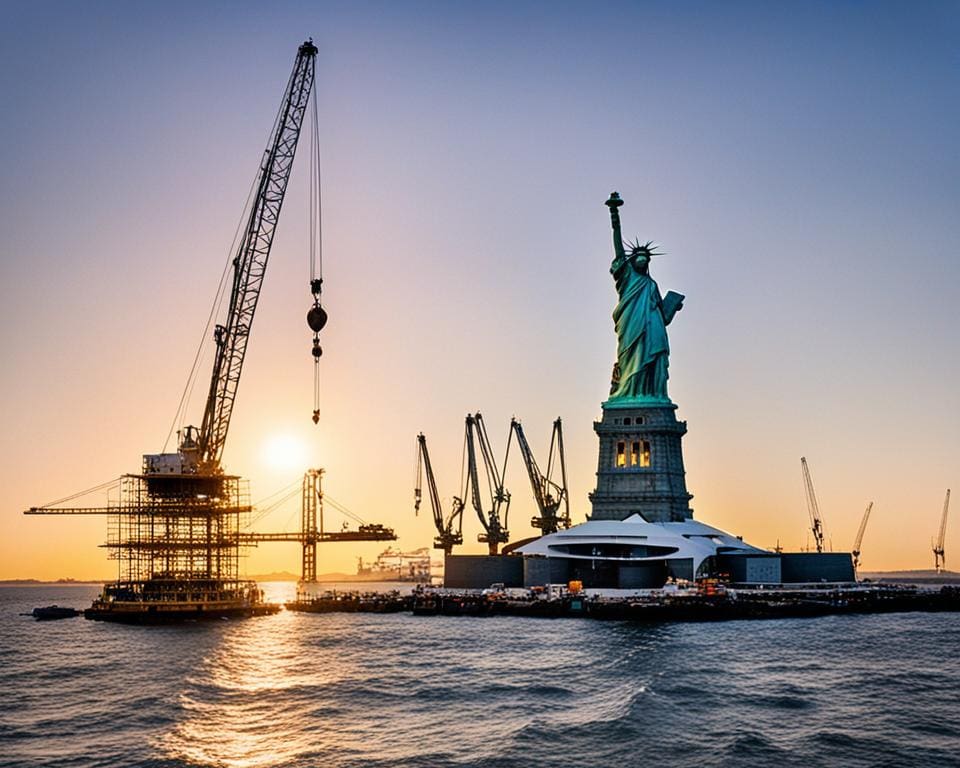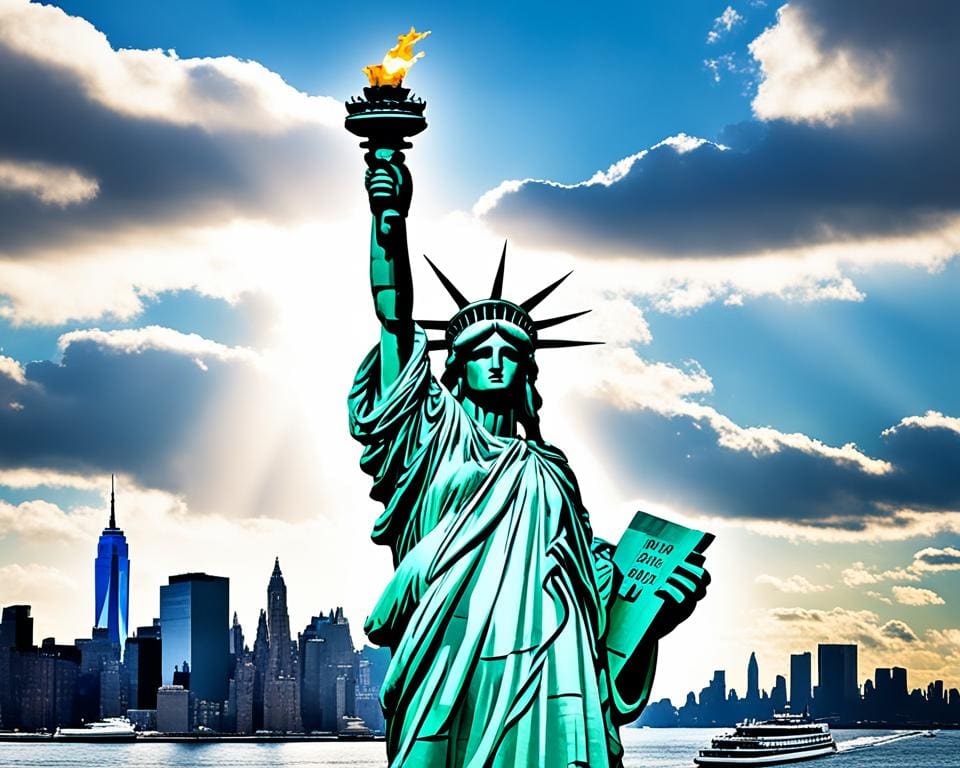The Statue of Liberty stands tall in New York Harbor. It is not just a symbol of liberty but also represents the rich history of American inspiration. This monumental gift from France was dedicated on October 28, 1886. It celebrates lasting friendships and the promise of democracy.
First completed in France in July 1884, the statue arrived in American in 1885. It was packed in 214 crates. Since then, it welcomed over 12 million immigrants. Lady Liberty became a beacon of hope, especially when slavery ended in the United States.
The pedestal was completed in April 1886. The original torch also underwent modifications. The Statue of Liberty’s story is a tapestry of dreams and aspirations. President Grover Cleveland was there at the dedication. Thousands attended, making it a noteworthy event in our history.
Today, this grand monument symbolizes freedom. But it also stands as a testament to our nation’s values and ideals.
Statue of Liberty: A Symbol of Freedom and History
The Statue of Liberty is more than just beautiful art. It’s a powerful symbol of freedom and hope. Created by French sculptor Frédéric-Auguste Bartholdi, it shows the deep connection between democracy and liberty in France and the U.S. It welcomes millions to New York Harbor, showing the lasting symbol of the Statue of Liberty across ages.
Overview of the Statue’s Creation
The Statue of Liberty’s story began in 1865, inspired by French historian Édouard de Laboulaye. He wanted to mark the centennial of America’s independence with this gift. Originally called “The Statue of Liberty Enlightening the World,” it was finished in Paris and given on July 4, 1884. It stands 305 feet tall and dazzles visitors with its 225-ton weight and Greco-Roman toga. This toga celebrates democratic ideals. The statue’s raised torch lights the way to a better future.
Initial Purpose and Symbolism
The statue was made to honor freedom and the strong bond between France and the U.S. Its symbolism is deep. The chains at its feet show the end of oppression. The seven rays in her crown stand for the seven continents and the wish for freedom everywhere. It speaks of democracy’s value, inspiring those who come to America hoping for a fresh start.
Significance in American Culture
The Statue of Liberty is a key part of American culture. Named a National Monument in 1924 and a UNESCO World Heritage Site in 1984, it’s a lasting symbol. With Emma Lazarus’ sonnet “The New Colossus” linked to it, the statue goes beyond its physical form. It brings a feeling of togetherness and strength that touches all Americans deeply.

Historical Background of the Statue of Liberty
The Statue of Liberty started with a deep idea of freedom and democracy. In 1865, Édouard de Laboulaye, a leading French thinker, proposed giving the statue to the United States. He wanted to honor America’s fight for liberty, especially after the Civil War ended slavery. This idea helped make the statue a key symbol of American ideals.
Édouard de Laboulaye’s Vision
Laboulaye’s vision shaped the statue, designed to show freedom and knowledge. The teamwork between France and the U.S. mirrored their hope for democracy. It became more than a monument; it’s a sign of hope for many looking for a better life.
The Role of Frédéric-Auguste Bartholdi
French artist Frédéric-Auguste Bartholdi was chosen to bring Laboulaye’s idea to life. Even with money problems, Bartholdi’s hard work resulted in creating the statue, which stands at 305 feet tall. Finished in 1884, it was shown to the world in 1886 with President Cleveland. The Statue of Liberty stands strong as a symbol of endurance and creativity.
Funding the Monument’s Construction
Building the statue needed a lot of money from many places. Joseph Pulitzer helped greatly through his newspaper, promising to print the names of donors. He gathered funds for the base with help from events and donations. This joint effort made the Statue of Liberty a lasting symbol of freedom, touching lives across generations.









